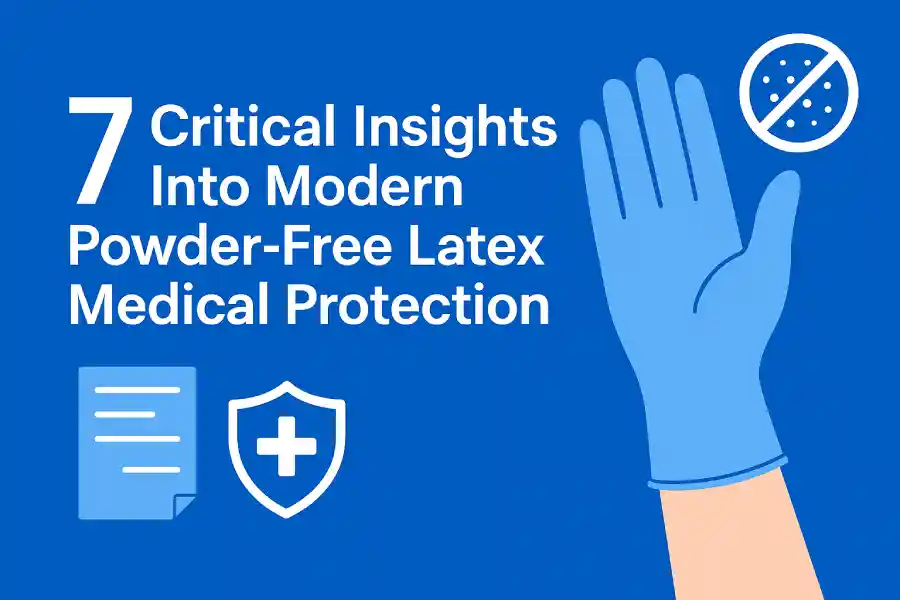
Healthcare environments demand rigorous infection control protocols, with hand protection serving as a frontline defense against pathogen transmission. The evolution of medical gloves represents a fascinating intersection of materials science, allergen management, and clinical safety considerations. While traditional powdered variants dominated the market for decades, powder-free latex gloves have emerged as the preferred standard in medical settings worldwide. This shift stems from mounting evidence linking glove powder to numerous adverse effects, including respiratory irritation, wound healing complications, and heightened allergic responses. Industry analysis indicates the global powder-free segment now commands approximately 78% of the latex glove market, with regulatory bodies across multiple countries implementing partial or complete restrictions on powdered variants due to documented health concerns. Understanding the technical aspects of these specialized protective barriers provides valuable context for healthcare procurement decisions.
Manufacturing Process Innovations Behind Powder Elimination
The production of powder-free variants employs sophisticated chlorination techniques absent in conventional manufacturing. This chemical process involves exposing glove surfaces to chlorine gas or hypochlorite solution within controlled reaction chambers, creating a slick outer polymer layer by modifying surface proteins. Advanced manufacturers implement precise chlorination parameters—typically maintaining pH levels between 2.0-4.0 with exposure times ranging from 8-12 minutes—to optimize surface properties without compromising structural integrity. The process effectively reduces surface tackiness while simultaneously decreasing extractable protein levels to below 50μg/dm². Some facilities enhance this approach with secondary polymer coating applications using hydrogel, silicone, or acrylic materials deposited through immersion or spray techniques to further reduce friction coefficients to approximately 0.15-0.25, compared to 0.40-0.55 in untreated latex.
Extractable Protein Content and Allergenic Profile Considerations
Protein content represents a critical quality metric, with direct implications for allergenicity. Research published in the Journal of Allergy and Clinical Immunology demonstrates strong correlation between extractable protein levels and allergic reaction incidence. Premium powder-free products typically maintain protein content below 50μg/dm² (measured via ASTM D5712 modified Lowry method), substantially lower than the 100-200μg/dm² commonly found in powdered alternatives. This reduction stems not only from chlorination effects but also through implementing extended leaching cycles during manufacture. Advanced leaching protocols employ multiple water baths maintained at precise temperatures (typically 80-85°C) with carefully controlled pH levels to effectively denature and remove soluble proteins from the latex matrix without degrading physical properties.
Barrier Performance Characteristics and Technical Specifications
Technical evaluation reveals distinct barrier integrity differences between powder-free and powdered variants. Accelerated aging studies demonstrate powder-free options maintain tensile strength (typically 24-30 MPa) and elongation properties (minimum 750% before breaking) throughout their shelf life with minimal degradation. Barrier efficacy against viral penetration, measured through bacteriophage testing methods, reveals failure rates below 2.5% in quality powder-free products—comparable or superior to powdered alternatives. Premium products incorporate additional cross-linking agents during vulcanization, achieving optimized physical properties while maintaining elasticity. The absence of cornstarch powder eliminates concerns regarding powder-facilitated microbial migration through microscopic defects, a phenomenon documented in several clinical studies examining surgical site infection correlations.
Tactile Sensitivity and Ergonomic Performance Factors
Contrary to earlier perceptions, modern powder-free designs demonstrate equivalent or superior tactile properties compared to powdered counterparts. Innovative polymer coatings reduce inner surface friction coefficients to approximately 0.2-0.3, facilitating donning without powder assistance while minimizing hand fatigue during extended wear. Biometric research measuring fine motor performance through standardized precision tasks shows comparable dexterity metrics between advanced powder-free products and bare-handed control conditions. Thickness profiles typically range from 0.08mm to 0.11mm at fingertips—optimizing both protection and sensory feedback critical for surgical and diagnostic procedures requiring maximum precision.



